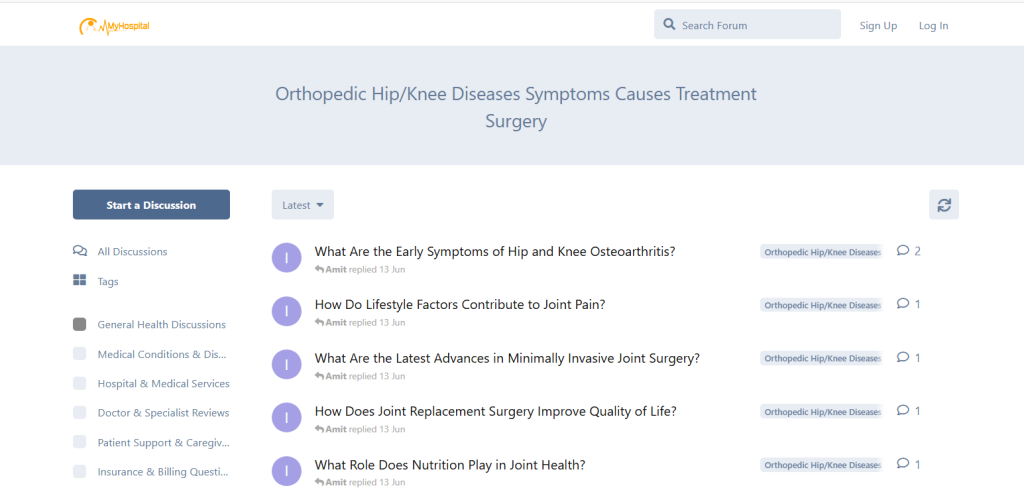
By 2030, the United States alone is projected to perform an astonishing 3.48 million primary total knee replacements. That statistic is staggering, but it masks the true, immediate crisis gripping global orthopedics: the projected rise in revision surgeries.
Experts predict revision total knee arthroplasty (rTKA) incidence will increase by up to 182% by 2030, turning a challenging procedure into a potential catastrophe for patients and healthcare systems worldwide. Revision surgery is exponentially more complex, costly, and carries higher complication rates.
For professionals, enthusiasts, and curious readers, this is the breaking point. The old model of orthopedic care—simply treating the symptoms of osteoarthritis, rheumatoid arthritis, or post-traumatic arthritis—is obsolete. We must shift our focus to precision, longevity, and prevention. The global medical tourism destination you choose must be future-proofing your procedure against the nearly inevitable failure of older implant technology.
Decoding the Pain: Symptoms, Causes, and the Path to Mobility
Joint replacement surgery is an end-of-the-line treatment, yet the journey begins years earlier. Understanding the underlying pathology is crucial for both early intervention and successful planning for surgery.
A. Recognizing the Critical Symptoms
While persistent pain is the most obvious sign, for the discerning reader, the warning signs are more specific:
- Mechanical Symptoms: Locking, grinding, or ‘giving way’ of the joint, indicating severe cartilage damage (osteoarthritis) or loose bodies.
- Night Pain: Pain that is not relieved by rest is a classic sign of late-stage joint disease, where the inflammation is constant.
- Compensatory Gait: A noticeable limp or an inability to stand on one leg, signaling profound muscular and ligamentous compromise.
B. Primary Causes Requiring Surgical Intervention
| Disease Category | Description | Primary Surgical Solution |
| Osteoarthritis (OA) | The most common cause; breakdown of articular cartilage leading to bone-on-bone friction. | Total Joint Arthroplasty (TJA) |
| Rheumatoid Arthritis (RA) | An autoimmune disease causing chronic joint inflammation and destruction. | Total Joint Arthroplasty (TJA) |
| Avascular Necrosis (AVN) | Death of bone tissue due to lack of blood supply, often affecting the hip. | Total Hip Replacement (THR) |
| Post-Traumatic Arthritis | Arthritis resulting from a previous joint injury, fracture, or surgical trauma. | Joint Replacement or Osteotomy |
The Surgical Revolution: 3 Breakthroughs Reshaping Orthopedic Care
The current surge in demand is being met by revolutionary technology that significantly reduces the risk of revision and accelerates recovery. These are the non-negotiable standards to look for in any world-class center:
1. Precision-Driven Robotics and Computer Navigation
Robotic-assisted surgery (e.g., MAKO, ROSA) is no longer a luxury; it is the new baseline for precision. The robot does not perform the surgery, but it guides the surgeon with sub-millimeter accuracy, ensuring:
- Perfect Alignment: Crucial for the longevity of the implant.
- Soft Tissue Protection: Minimally invasive incisions and less trauma to surrounding ligaments and muscles.
2. Smart Implants and Remote Monitoring
The latest breakthrough involves Smart Knee Implants: FDA-approved devices with integrated, Bluetooth-enabled sensors.5 These implants provide the surgical team with real-time data on the patient’s gait, range of motion, and step count from home.6 This allows for:
- Personalized Rehabilitation: Adjusting physical therapy protocols remotely based on objective, continuous data.7
- Early Complication Detection: Identifying deviations in recovery metrics before they become clinical crises.
3. The Next Generation of Pain Management: iovera and Multimodal Blocks
Post-operative pain is the single biggest barrier to early rehabilitation. Cutting-edge centers are using techniques like iovera (a pain management system that temporarily shuts down sensory nerves using focused cold) combined with advanced nerve blocks and non-opioid protocols.8 This combination provides months of localized pain relief, enabling patients to walk sooner and complete intensive physical therapy faster, drastically shortening recovery time.
Insider Strategies: Vetting Your Global Joint Replacement Destination
For the discerning medical traveler seeking superior outcomes at centers like MyHospitalnow.com, price cannot be the only metric. The goal is to secure world-class, revision-proof care.
| Strategy | Actionable Tip (What to Ask) | Why it Matters |
| Focus on Implant Longevity | What is the specific manufacturer, material (e.g., highly cross-linked polyethylene, ceramic), and expected 15-year survival rate of the implant used? | Older implants (metal-on-metal or first-gen polyethylene) are the primary drivers of future revisions. |
| Verify Technological Integration | Are your surgeons credentialed on the latest robotic platforms (MAKO, ROSA, etc.), and what percentage of total joint procedures are robotically assisted? | Manual procedures, even by expert hands, lack the predictable precision of computer-assisted surgery. |
| Demand Standardized Pathways | Do you utilize an Enhanced Recovery After Surgery (ERAS) protocol, and what is the typical length of hospital stay (L.O.S.)? | Low L.O.S. (often 1-2 days) and ERAS protocols indicate streamlined, efficient, and complication-averse care. |
| Review Post-Discharge Support | What is the protocol for remote patient monitoring (RPM) or telehealth follow-up, especially for international patients? | Continuous, data-driven monitoring of the joint after discharge is crucial for catching complications and optimizing long-term success. |
Conclusion: Investing in Your Lifespan, Not Just Your Joint
The $25,000 cost savings of medical tourism is attractive, but the true value lies in accessing the medical future today. The technological advancements in robotics, implant materials, and pain management have fundamentally changed the risk calculus of hip and knee replacement.
The global orthopedic landscape is in a race against the clock—the clock of the booming patient population and the ticking failure rate of older implants. By prioritizing centers that have embraced these breakthroughs, professionals and patients alike are not just treating pain; they are investing in decades of high-quality, complication-free mobility, and preventing the costly, painful burden of the orthopedic revision tsunami.